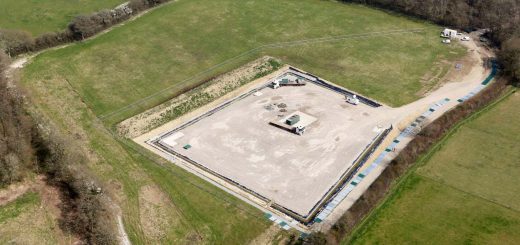Vapour-sniffing drug detector tested at the US-Mexico border
Drugs and explosive chemicals are difficult to detect, but a device more sensitive than a dog’s nose can pick up their traces in seconds
By Jeremy Hsu
7 July 2025
The VaporID detector can find traces of fentanyl and other substances in the air
Elizabeth Denis/Pacific Northwest National Laboratory
The US Customs and Border Protection agency is testing technology that sniffs out illegal substances in the air, no contact required. The device could screen objects at the border within seconds to help combat the trafficking of drugs like fentanyl, which is driving the opioid crisis in the US.
Read more
Drone versus drone combat is bringing a new kind of warfare to Ukraine
Drugs and explosive chemicals are difficult to detect because they release relatively few molecules into the ambient air, which is already filled with other vapours. To solve this problem, Robert Ewing and his colleagues at the US Pacific Northwest National Laboratory (PNNL) in Washington state spent the past decade developing an extremely sensitive system called VaporID. It can accurately identify specific substances from 0.6 to 2.4 metres away at levels of 10 parts per quadrillion – comparable to finding a single coin in a stack of pennies 17 million times higher than Mount Everest.
The scientists achieved this by giving molecules from substances of interest more time to randomly bump into other molecules and produce a detectable chemical reaction. Most devices for identifying unknown substances give molecules only a few milliseconds to react, says Ewing. “We made the atmospheric flow tube, which provided 2 or 3 seconds of reaction time and gave three orders of magnitude increase in sensitivity.”
That technology is now incorporated into an 18-kilogram commercial device the size of a microwave oven. The miniaturised machine, developed by California-based company BaySpec, is less sensitive than the PNNL lab version, which weighs more than 100 kilograms and is the size of a small refrigerator. But it is still “more accurate and more sensitive than a canine”, says William Yang, CEO of BaySpec.
BaySpec and PNNL researchers tested the portable device at a Customs and Border Protection (CBP) facility in Nogales, Arizona, in October 2024. The team opened sample vials containing liquid or powder forms of seized drugs – including cocaine, heroin, fentanyl and methamphetamine – and held the open vials near the device inlet. In separate tests, researchers swiped the surface of seized pills and heated the swabs to generate vapor for detection. “Both methods produced strong, reliable results,” says Krisztian Torma at BaySpec.


